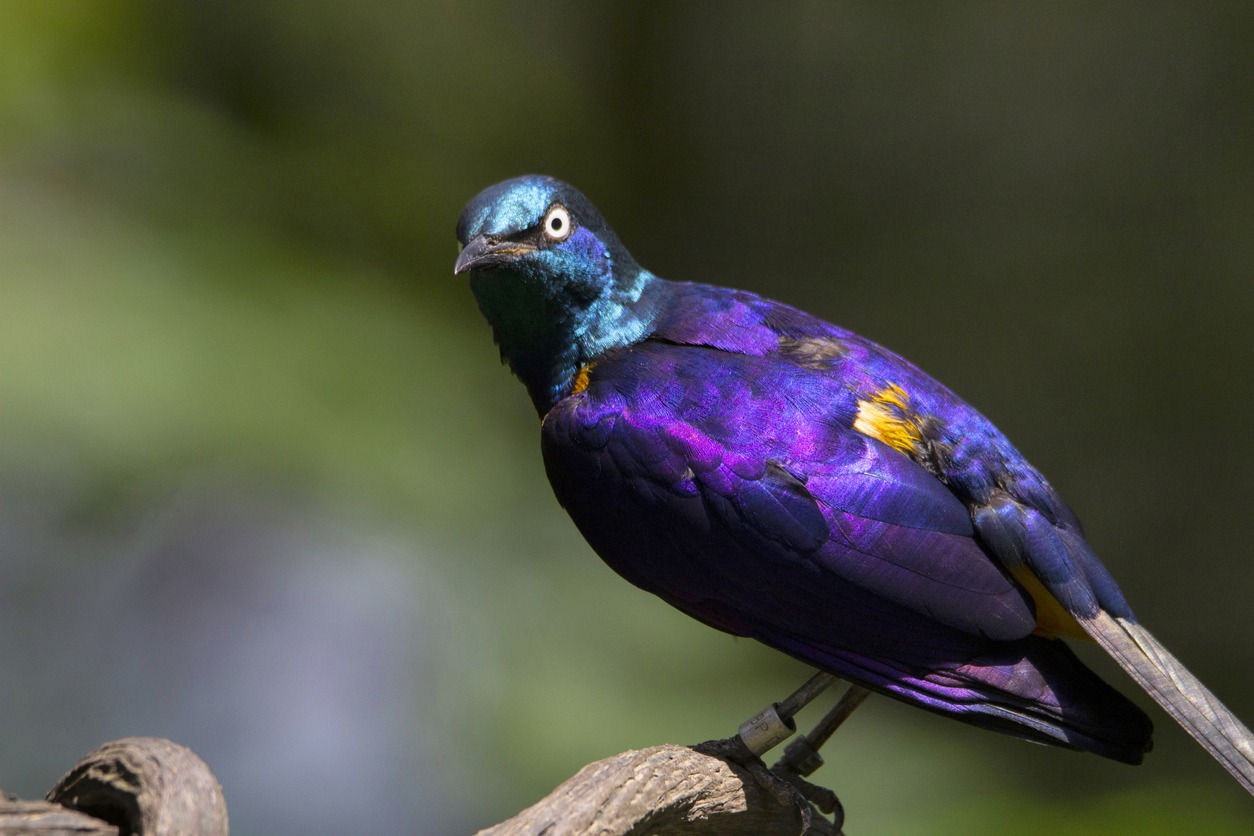It is a large, elegant starling with an exceptionally long, graduated, willowy tail, and glossy metallic green plumage, where it got its name. This bird is endemic and a resident in Africa, occurring from Senegal east to Sudan and preferring open woodland and cultivated areas. It is ubiquitous, easily recognized through its harsh, rasping call.
Read further to know more about the Long-tailed Glossy Starling.
What is a Long-tailed Glossy Starling?
Long-tailed Glossy Starling is a passerine bird belonging to the starling family of Sturdinae. It is also known as the Long-tailed Purple Starling, the Northern Long-tailed Glossy Starling, or the Supple-tailed Glossy Starling. As their name suggests, this bird has a shiny metallic green plumage, and an extremely long tail, covering 60 percent of its total body length.
Its seven levels of classification are as follows:
Kingdom: Animalia
Phylum: Chordata
Class: Aves
Order: Passeriformes
Family: Sturnidae
Genus: Lamprotornis
Species: L. caudatus
Long-tailed Glossy Starling Physical Description
Long-tailed Glossy is a large measuring 21 inches or 54 centimeters, with 13 inches or 34 centimeters being the vibrant purple tail. Its upper plumage is metallic green, while underpart is mostly violet. The eyes are bright yellow while the face is black. Both sexes look similar. Juveniles or immature birds sport a paler plumage of a brownish hue.
Where can they be spotted?
Long-tailed Glossy Starling occurs in tropical Africa from Senegal east to Sudan. The bird is endemic and a resident breeder to the following countries: Burkina Faso, Benin, Chad, Cameroon, Central African Republic, Côte d’Ivoire, Gambia, northern Guinea, Ghana, Guinea-Bissau, Liberia, Mauritania, Mali, Nigeria, Niger, Senegal, Sudan, and Togo. It thrives in open wooded savanna, woodlands, thorn scrub, thickets, and cultivated areas.
Interesting Facts You Should Know About the Long-tailed Glossy Starling
Long-tailed Glossy Starlings, like many birds, are omnivorous and feed on various plant matter, such as from the Neem tree, fruits, and insects, like winged and terrestrial ants, crickets, moths, grasshoppers, locusts, and butterflies.
While their tail is striking, it does not only serve aesthetic purposes as they use it for balance as they forage for food. Plus, their feet evolved to be good at gripping.
These birds are highly gregarious, occurring to more than ten individuals outside the breeding season and roosting in communal areas. They are noisy, and their call is characterized by harsh, rasping notes. They may also produce raucous alarm calls when threatened.
Breeding season varies depending on the range but usually occurs from August to November. It happens from September to November in Gambia and Senegal, September to October in Nigeria, and August to October in Mali.
Like its starling cousins, this species builds their nest inside any tree cavity. The actual nest is constructed using leaves, dried grasses, and twigs. The females will lay 2-4 eggs, which she will solely incubate.
The population of the Long-tailed Glossy Starling is stable. They are currently classified as Least Concern (LC) under the International Union for Conservation of Nature Red List of Threatened Species.
BOTSWANA BIRDS | SOUTH AFRICA BIRDS
NAMIBIA BIRDS | ZAMBIA BIRDS | ZIMBABWE BIRDS
